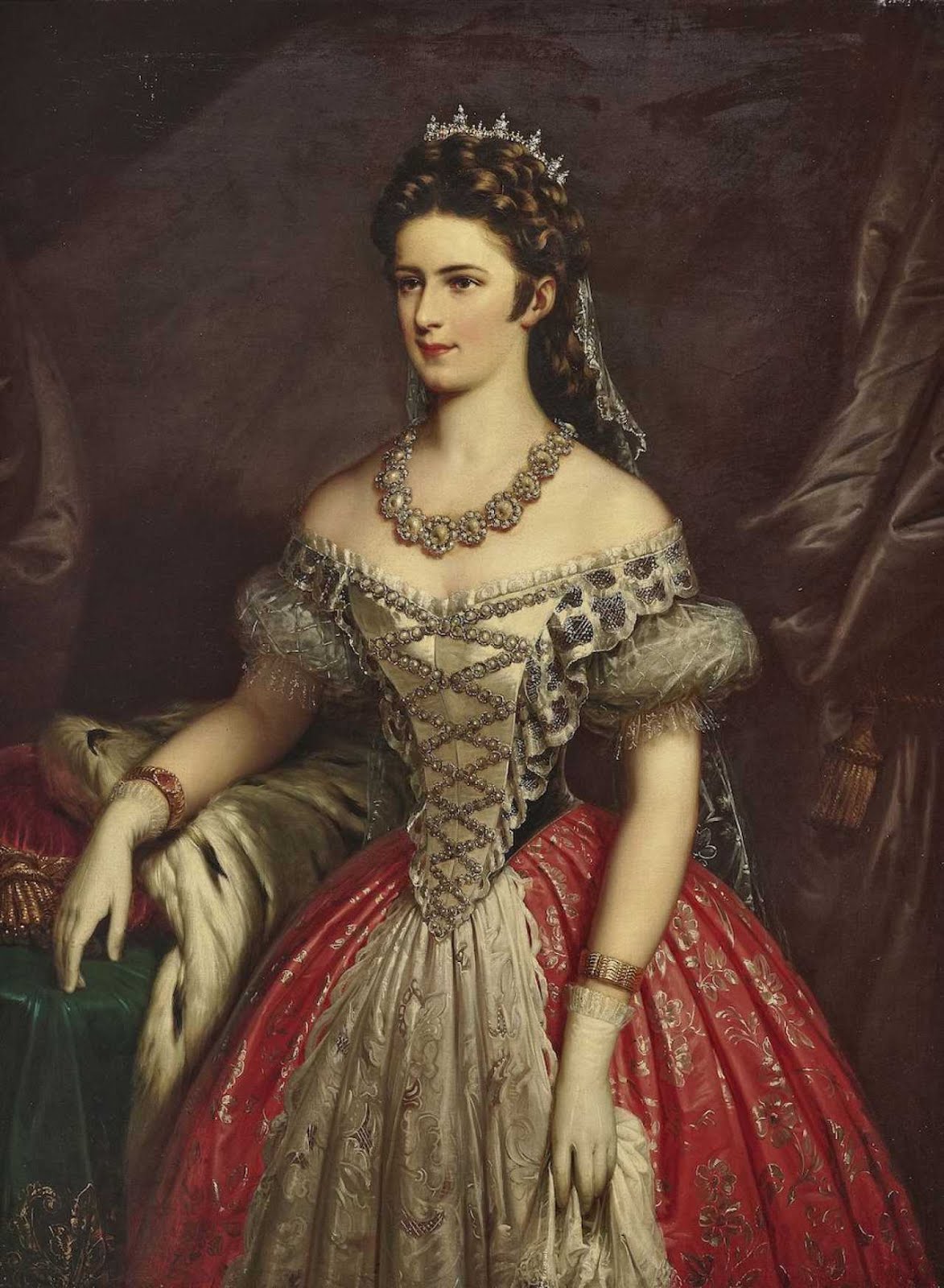One of the most famous painting by Franz Xaver Winterhalter was that of Princess Anna of Prussia. The princess, dressed in this painting in a diaphanous attire of tulle and silk, completed this enchanting ensemble by wearing several rows of pearls on her neck, hands and waist.
Princess Anna was the youngest daughter of Prince Charles of Prussia and Princess Marie of Saxe-Weimar-Eisenach. She was born in Berlin on May 17, 1836. As a member of the Prussian royal family and one of the leading beauties of the Prussian court at that time, she was the object of admiration among young men. Princess Anna was not only good-looking, but she was also exceptionally clever and charming.
In 1852, she met the young Emperor Franz Joseph I of Austria when he was on a visit to Berlin. He fell in love with Anna and wanted to marry her. The emperor's mother, Archduchess Sophie, was also quite taken with her, and wrote a letter to her sister, the Queen of Prussia, referring to Franz Joseph's feelings: "...the happiness that showed itself to him like a fleeting dream and made an impression on his heart -- alas -- much stronger and deeper than I had first thought".
As much as Franz Joseph wanted to propose to Anna, she was already engaged to Landgrave Frederick William of Hesse-Kassel. To further add complications, the Prussian court were against an alliance with Austria. The Archduchess Sophie, determined as ever, was hopeful that "this sad marriage, which they are imposing on this charming Anna and which leaves her no prospect of happiness whatsoever, could be prevented". The matchmaking was unsuccessful and Anna married Frederick William on May 26, 1853 at the Charlottenburg Palace in Berlin.
The 17 year-old Anna was Frederick William's second wife. He was previously married to Grand Duchess Alexandra Nikolaievna of Russia, a cousin of Anna on her mother's side, but Alexandra died tragically of tuberculosis shortly after giving birth to her baby. Frederick William lost both his wife and son on the same day and it was a devastating blow for him. It took him a long time to find another wife, but the tragedy of Alexandra's death seemed to have preyed into his mind long after he married Anna. Both he and Anna shared a harmonious married life; both respected each other, but Frederick William never truly got over his loss of Alexandra, and as a result he became emotionally distant towards Anna. Nevertheless, the couple went on to have six children.
Anna was considered a fashionable woman who place an utmost care in her appearance. Her splendid figure was flattered by her taste for dresses that have ample skirts and low neckline.
She was also very interested in music and the arts. She had remarkable talent in playing the piano, having been trained by German composer Theodore Kullak. She was also a great friend of Clara Schumann, Anton Rubinstein and Johannes Brahms; the latter even dedicated a piano quintet for her.
Later in her life, Anna converted to Roman Catholicism, much to the chagrin of the Prussian court, especially the Kaiser William II.
Landgravine Anna of Hesse-Kassel died on June 12, 1918 and she was buried in the Fulda Cathedral.
Read about Landgrave Frederick William's first wife here:
Grand Duchess Alexandra Nikolaievna of Russia


























3 comments:
I am so excited to read this! Anna was a very fascinating person, and I have always felt badly for her...
Yes. Anna is indeed a wonderful person but she and Frederick William's marriage was not match made from heaven. I wonder what will happen had she married Franz Joseph. Just a thought. :-)
If you like, I can message you on the AP Forum with some more information on Anna :)
I often wonder the same thing; maybe she would have had a happier life if she had married Franz Joseph.
Post a Comment